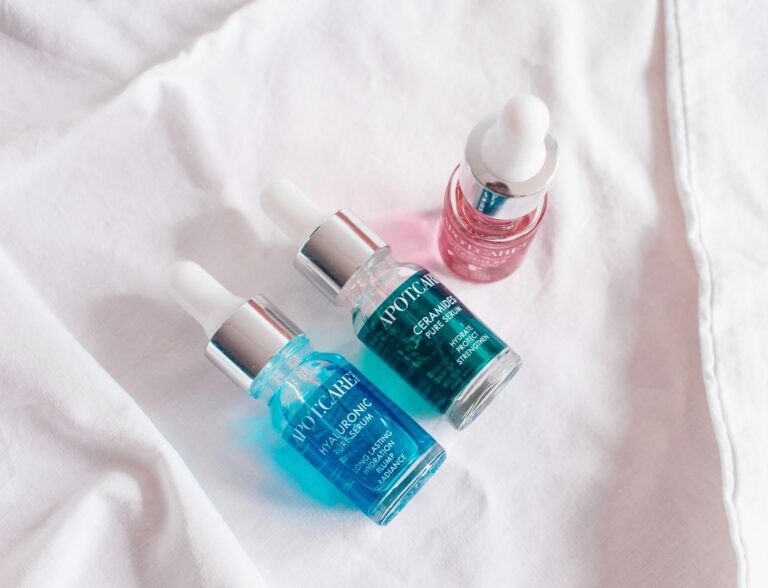
In the realm of cosmetic enhancements, dermal fillers have become increasingly popular due to their effectiveness in smoothing wrinkles and restoring volume. However, the journey to achieving perfect results is not always straightforward. But are fillers reversible?
It is essential for anyone considering this treatment to understand the various types of fillers, their mechanisms, and the potential risks involved. This article delves into the intricacies of fillers, including their reversibility for individuals in the UK who may find themselves unhappy with the results.
By gaining this knowledge, you can approach your filler experience with greater confidence and clarity.
What Are the Different Types of Fillers?

Fillers have become a popular option for patients in the UK looking to enhance their facial aesthetics and achieve their beauty goals through non-surgical methods.
With a variety of fillers available, each specifically designed to address concerns such as age-related volume loss, skin texture, and facial contouring, patients can choose from a range of cosmetic procedures tailored to their individual needs.
It’s important to understand the different types of fillers, such as:
- Hyaluronic acid fillers
- Calcium hydroxylapatite fillers
- Poly-L-lactic acid fillers
- Polymethylmethacrylate fillers
This knowledge is crucial for making informed decisions about aesthetic treatments and ensuring satisfactory outcomes.
1. Hyaluronic Acid Fillers
Hyaluronic acid fillers are among the most commonly used fillers in aesthetic treatments, renowned for their ability to deliver immediate volume and hydration to the skin. This makes them particularly popular among individuals seeking facial rejuvenation.
These fillers function by mimicking the body’s natural hyaluronic acid, a substance known for its moisture-retaining properties that contribute to the skin’s suppleness. When injected, they create a plumping effect in areas such as the lips and cheeks, enhancing facial contours and helping to achieve a more youthful appearance.
Patient satisfaction with these treatments tends to be quite high, as many individuals notice significant improvements with minimal downtime. It is essential for patients to be informed about maintenance, as the effects typically last anywhere from six months to a year, depending on the specific product used and the area being treated.
Providing education on treatment duration and expected results helps to foster realistic expectations, ultimately contributing to a positive overall experience.
2. Calcium Hydroxylapatite Fillers
Calcium hydroxylapatite fillers represent a biocompatible option that not only offers immediate volume but also encourages collagen production. This makes them an excellent choice for patients seeking long-lasting results in their aesthetic treatments.
These fillers typically consist of a smooth gel that integrates seamlessly with the surrounding tissue, allowing for natural-looking enhancements. They are commonly employed in facial contouring and are particularly effective for reducing fine lines, enhancing cheek volume, and improving overall skin texture.
When compared to hyaluronic acid fillers, calcium hydroxylapatite tends to provide greater structural support due to its thicker consistency, and the results can last significantly longer—often up to 18 months or even more.
It is essential to adhere to safety protocols; therefore, consultations with qualified practitioners are crucial to ensure proper placement and to minimise any potential side effects. A thorough understanding of individual skin types and needs plays a significant role in achieving optimal results.
3. Poly-L-lactic Acid Fillers
Poly-L-lactic acid fillers present a distinctive method of facial rejuvenation by gradually restoring lost volume over time. This characteristic makes them an excellent choice for individuals who desire subtle and natural aesthetic outcomes.
These fillers function by stimulating the body’s own collagen production, which leads to a progressive enhancement of the skin’s texture and firmness. Consequently, those who opt for this treatment can experience a refreshed appearance that evolves over several months, aligning perfectly with the goals of individuals seeking a more understated transformation.
While these fillers are particularly well-suited for older adults or those experiencing significant volume loss, they can also benefit younger patients looking to maintain their youthful contours. It is important to educate patients about the gradual effects of the treatment and emphasise the significance of follow-up appointments.
This approach ensures realistic expectations and optimal results, ultimately contributing to a positive treatment experience.
4. Polymethylmethacrylate Fillers
Polymethylmethacrylate fillers present a more permanent option for those seeking enduring enhancements in facial volume and contouring. However, these fillers also come with specific risks, including filler migration and potential aesthetic complications.
Given this complexity, it is vital for both patients and practitioners to have in-depth discussions about the benefits and drawbacks before proceeding with treatment. While these fillers can offer lasting results that enhance a patient’s appearance, understanding the potential for adverse outcomes is essential for making informed decisions.
Patients need to be aware that these procedures may lead to permanent changes in their facial structure, which might not always align with their expectations.
Thus, the consultation process should focus on providing comprehensive education regarding safety, emphasising the importance of setting realistic goals, and ensuring informed consent. This approach helps build a trusting relationship between patients and providers.
How Do Fillers Work?
Fillers function by employing a variety of substances that are injected into the skin to restore volume, enhance facial contours, and improve overall skin texture. Depending on the type of filler used, these substances can stimulate natural collagen production or provide immediate plumpness, effectively addressing concerns such as age-related volume loss or diminished skin elasticity.
Gaining an understanding of the science behind fillers reveals how they interact intricately with the skin’s tissue, leading to subtle yet effective changes. The materials used, such as hyaluronic acid or calcium hydroxylapatite, possess unique properties that help achieve the desired outcomes for patients.
The importance of having a skilled injector cannot be overstated. Proper techniques ensure that the filler is distributed evenly and tailored to an individual’s anatomical features. Patients often arrive with a range of expectations, making it essential to develop personalised treatment plans that not only consider their aesthetic goals but also promote natural-looking results, aligned with each person’s unique facial structure and skin condition.
What Are the Benefits of Fillers?

The advantages of fillers go beyond just immediate aesthetic improvements; they also provide non-surgical options for patients in the UK who wish to meet their beauty ideals with minimal recovery time and lower risks compared to surgical procedures.
While the cost of dermal fillers in the UK can vary, their ability to enhance facial symmetry, restore youthful volume, and improve specific treatment areas makes them a highly valued option for many individuals.
These benefits result in high levels of client satisfaction, further highlighting the appeal of dermal fillers as a versatile and effective treatment.
What Are the Risks of Fillers?
Fillers are typically regarded as safe; however, it is important for patients to be aware of certain risks associated with their use.
These risks can include potential aesthetic complications, side effects such as allergic reactions, and concerns related to filler migration.
Being informed about these risks is essential for patients in the UK so they can make informed decisions regarding their cosmetic procedures.
1. Allergic Reactions
Allergic reactions to fillers, while rare, can occur and may present as swelling, redness, and itching at the injection site. This highlights the importance of prioritising patient safety and engaging in a thorough consultation prior to any treatment.
These reactions can vary from mild irritations to more severe symptoms, making it essential for anyone considering cosmetic enhancements to understand the potential outcomes. It is crucial for individuals to share their complete medical history during consultations, as this information helps practitioners assess any potential risks related to allergies or sensitivities.
Qualified professionals, equipped with extensive product knowledge and a commitment to safety protocols, play a key role in minimising these risks. This ensures that patients can achieve their desired aesthetic results while reducing the likelihood of adverse effects.
2. Infection
Infection is a notable risk associated with fillers, often stemming from improper injection techniques or insufficient aftercare. This underscores the importance for patients to diligently follow post-treatment care instructions to facilitate a smooth recovery.
To reduce the likelihood of infection, practitioners must adhere to strict hygiene protocols. This includes using sterile instruments and gloves, as well as ensuring the treatment area is thoroughly cleaned before starting the procedure.
It is essential to educate patients on the importance of refraining from touching the injection sites and avoiding exposure to harsh environments immediately following treatment. Aftercare practices, such as applying prescribed topical treatments and steering clear of strenuous activities, are also crucial for recovery.
By upholding proper hygiene standards and adhering to post-procedure guidelines, patients can significantly minimise their risk of complications, which ultimately leads to improved results in areas such as facial contouring and wrinkle reduction.
3. Nerve Damage
While extremely rare, nerve damage can occur due to improper injection techniques, potentially leading to temporary or permanent changes in sensation. This situation underscores the importance of educating patients about the necessity of choosing qualified practitioners for aesthetic procedures.
The range of complications can vary from mild numbness to significant impairment, both of which can impact daily life and overall well-being. This highlights a critical point: prospective patients should engage in thorough discussions with their healthcare providers regarding the risks associated with various cosmetic treatments.
It is essential to understand the sources of nerve injury, such as anatomical variations and the depth of injection. By taking these precautions, patients can help minimise any adverse effects associated with procedures.
Having open dialogue with practitioners is key to ensuring that expectations are aligned, and appropriate measures are taken to facilitate safe treatment.
4. Migration of Fillers
Filler migration can present aesthetic challenges when the filler shifts from its intended area, potentially leading to less than desirable results that may require correction or even reversal treatments.
Several factors can contribute to this issue, including the type of filler used, the technique employed during injection, and even the individual anatomy of the patient. It is essential to utilise appropriate injection techniques, as professionals need to consider the depth, speed, and quantity of filler injected to ensure it remains in the desired location.
Regular maintenance of the filler, such as scheduling follow-up appointments and monitoring for any changes, can significantly reduce the likelihood of migration. Should migration occur, there are strategies available—such as dermal massage or, in more severe cases, the use of hyaluronidase injections—that can assist in realigning the filler to its intended location.
Therefore, being informed and proactive can greatly help in minimising potential complications.
Can Fillers Be Reversed?

Indeed, fillers can be reversed, especially hyaluronic acid fillers. This is possible through the use of dissolving agents such as hyaluronidase.
Practitioners use this method to address complications such as filler migration and to ensure that they achieve the desired aesthetic results for their patients.
1. Hyaluronidase Injections
Hyaluronidase injections serve as a swift and effective method for reversing hyaluronic acid fillers, making them an essential tool in managing aesthetic complications and ensuring patient safety during filler treatments.
This enzyme functions by breaking down the hyaluronic acid molecules, which allows for the immediate restoration of the treated areas. The administration of hyaluronidase typically involves a straightforward injection in the area where the filler was applied, and the procedure can be completed in just a few minutes, providing quick relief from any undesirable results.
There are various scenarios where such intervention may be necessary, including cases of overfilling, asymmetry, or unwanted side effects such as lumps or swelling.
It is vital for patients to seek out qualified professionals with extensive experience and training in injectables. A skilled practitioner not only understands the underlying anatomy but also employs the appropriate techniques to ensure that the procedure is both safe and effective.
2. Surgical Removal
In situations where filler migration or complications are particularly severe, surgical removal may become necessary to address the issues and achieve the desired aesthetic outcomes. However, it is important to recognise that this approach carries its own risks associated with surgical procedures.
The decision to pursue surgery often arises from ongoing discomfort, unsatisfactory aesthetic results, or when non-surgical options, such as hyaluronidase injections, do not effectively resolve the problem.
The surgical process generally involves a careful incision made by a skilled surgeon who will meticulously remove the unwanted filler in order to minimise tissue damage. As with any surgical intervention, there are inherent risks, including infection, scarring, and extended recovery times.
Therefore, it is essential to consult with a qualified healthcare professional to discuss the potential benefits and drawbacks in detail. They can offer valuable insights tailored to individual circumstances, guiding patients through this complex decision-making process.
What Are the Factors That Affect Reversibility of Fillers?
The reversibility of fillers can differ depending on various factors, such as the type of filler administered, the volume injected, and the duration since the treatment took place.
This highlights the importance of educating patients about the longevity of fillers and the possible outcomes associated with their use.
1. Type of Filler Used
The type of filler utilised is a key factor in determining reversibility. For instance, hyaluronic acid fillers can be easily reversed with the use of hyaluronidase, while other fillers, such as calcium hydroxylapatite, may pose challenges due to their more permanent nature.
This distinction significantly influences patient expectations, as individuals seeking facial enhancements often prioritise the ability to adjust or reverse the results if they are not satisfied. When planning treatments, practitioners must carefully assess these differences, ensuring that patients are well-informed about the characteristics of the fillers and the potential long-term commitment associated with certain products.
In this context, informed consent is essential. Patients should be thoroughly informed about the specifics of their chosen fillers, including the likelihood of permanence and the implications for future treatments. This approach give the power tos them to make educated decisions that align with their aesthetic goals.
2. Amount of Filler Injected
The volume of filler injected plays a crucial role in determining its reversibility; using larger amounts can complicate the reversal process and impact the overall effectiveness of the treatment. This underscores the necessity for careful dosing during procedures.
When practitioners administer fillers, they must weigh the volume against the desired aesthetic outcomes while considering the potential challenges if a reversal becomes necessary. Using excessive filler can increase the risk of complications, which not only jeopardizes the desired results but may also necessitate more extensive corrective interventions.
Therefore, it is essential for those involved in aesthetic treatments to implement strategic filler maintenance strategies. This approach ensures that patients achieve enhanced results while remaining informed about their options for potential corrections. By prioritizing optimal dosing and patient education, providers can create a more satisfying experience and promote better long-term outcomes.
3. Time Since Injection
The duration since the injection of fillers plays a significant role in determining their reversibility. As fillers naturally degrade over time, it becomes increasingly difficult to reverse the effects that have been established for an extended period.
Understanding this relationship is vital for practitioners who use hyaluronidase as a reversal technique. When fillers are still fresh, the enzyme tends to be more effective, dissolving hyaluronic acid almost instantly. However, as the body metabolises these substances, the structural integrity of the fillers may change, complicating reversal efforts.
Therefore, scheduling regular follow-up appointments with patients is essential to monitor the longevity of the fillers and address any adverse effects or concerns promptly. This proactive approach not only enhances patient safety but also builds trust between practitioners and their clients.
What Should UK Patients Do If They Are Disappointed with Their Filler Results?

When UK patients find themselves disappointed with their filler results, the first step is to patiently wait for the initial swelling to subside and for the results to settle, as this can significantly impact their overall satisfaction with the aesthetic outcomes.
After this period, it is important to have open discussions with their practitioner about any concerns they may have. This dialogue can provide valuable clarity and present options for resolution.
1. Wait for Results to Settle
It is essential to allow time for results to settle after receiving fillers, as initial swelling and bruising can lead to temporary dissatisfaction that often resolves with time and proper recovery.
Recovery times typically vary based on the type of filler used. For instance, individuals may notice improved results with hyaluronic acid fillers within a few days, whereas more extensive treatments might take up to two weeks for complete resolution.
Understanding these timelines is important for managing expectations, as some individuals may anticipate immediate results. During the recovery period, observing subtle changes is key, and it is important to be aware of any adverse reactions, such as excessive swelling or unusual tenderness.
If any concerns arise, consulting with the practitioner can ensure that potential complications are addressed promptly, allowing for the best possible outcome and peace of mind.
2. Discuss Concerns with the Practitioner
Discussing concerns with the practitioner is a vital step for patients who are unhappy with their filler results. Open communication plays a crucial role in addressing misunderstandings and aligning treatment expectations with realistic aesthetic outcomes.
Engaging in a transparent dialogue can greatly enhance the patient experience and strengthen the therapeutic relationship. Patients should consider asking important questions, such as:
- What specific techniques were used during the procedure?
- How can adjustments be made to achieve the desired look?
- What can be expected during the healing process?
By voicing these inquiries, individuals not only gain valuable insights but also give the power to themselves to take an active role in their care journey. Effective communication of feedback can lead to improvements in techniques and practices, ensuring that future patients may enjoy an even more satisfying experience.
3. Seek Reversal Treatment
If concerns persist, patients in the UK may want to consider seeking reversal treatment, especially if they are experiencing issues such as filler migration or other complications. Hyaluronidase injections are an effective option for dissolving unwanted filler material.
This important decision often emerges when individuals notice unexpected changes in their appearance, resulting in feelings of dissatisfaction or discomfort with their current cosmetic enhancements.
During the reversal procedure, patients can expect a thorough assessment from a qualified practitioner, who will take the time to explain the process and potential outcomes. This approach ensures that patients feel informed and at ease.
Prioritising safety throughout this process is crucial, as skilled professionals will implement necessary precautions to minimise risks and provide effective care.
Clear communication plays a vital role, allowing patients to express their concerns and gain a comprehensive understanding of each step involved in the treatment.
Frequently Asked Questions
Are fillers reversible?
Yes, most fillers used in the UK are reversible. This means that their effects can be reversed if the patient is not satisfied with the results.
How can I tell if my filler is reversible or not?
The best way to determine if a filler is reversible is to ask your practitioner before receiving the treatment. They will be able to provide you with information about the specific filler being used and its reversibility.
What should I do if I am not happy with my filler results?
If you are disappointed with the results of your filler treatment, it is important to contact your practitioner as soon as possible. They will be able to assess the situation and determine if the filler can be reversed or if another solution is needed.
Are there any risks associated with reversing fillers?
Reversing fillers can carry some risks, such as temporary swelling and bruising. However, these side effects are usually minor and resolve quickly. It is important to discuss the potential risks with your practitioner before undergoing any reversal procedure.
Do dermal fillers hurt?
Most dermal fillers cause minimal discomfort as they are typically administered with a fine needle, and many formulations include a local anesthetic like lidocaine to reduce pain.
What other options do I have if my filler results are not what I expected?
If your filler results are not what you expected, there are other options available such as corrective treatments or using a different type of filler. It is important to discuss these options with your practitioner to determine the best course of action.






